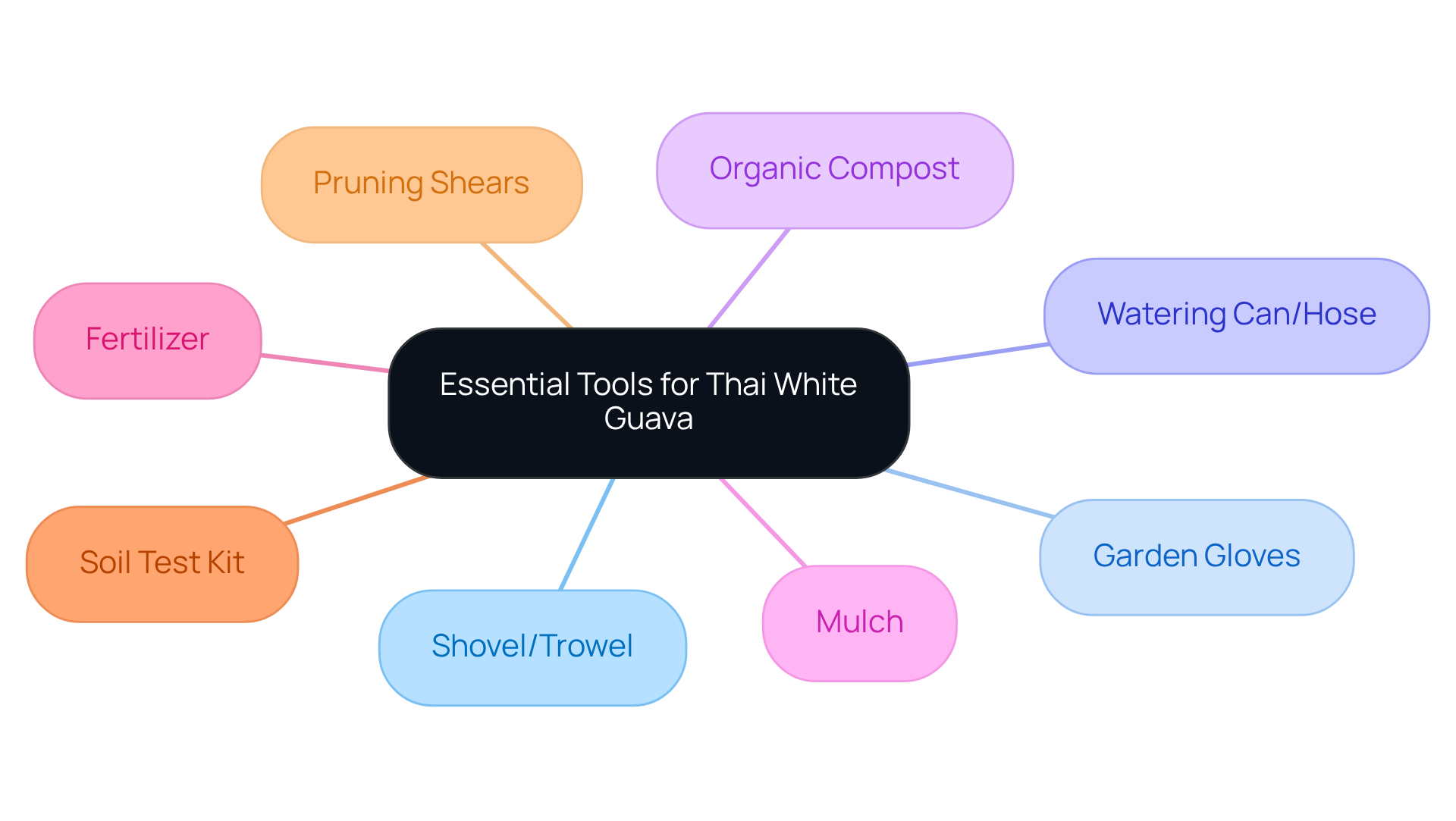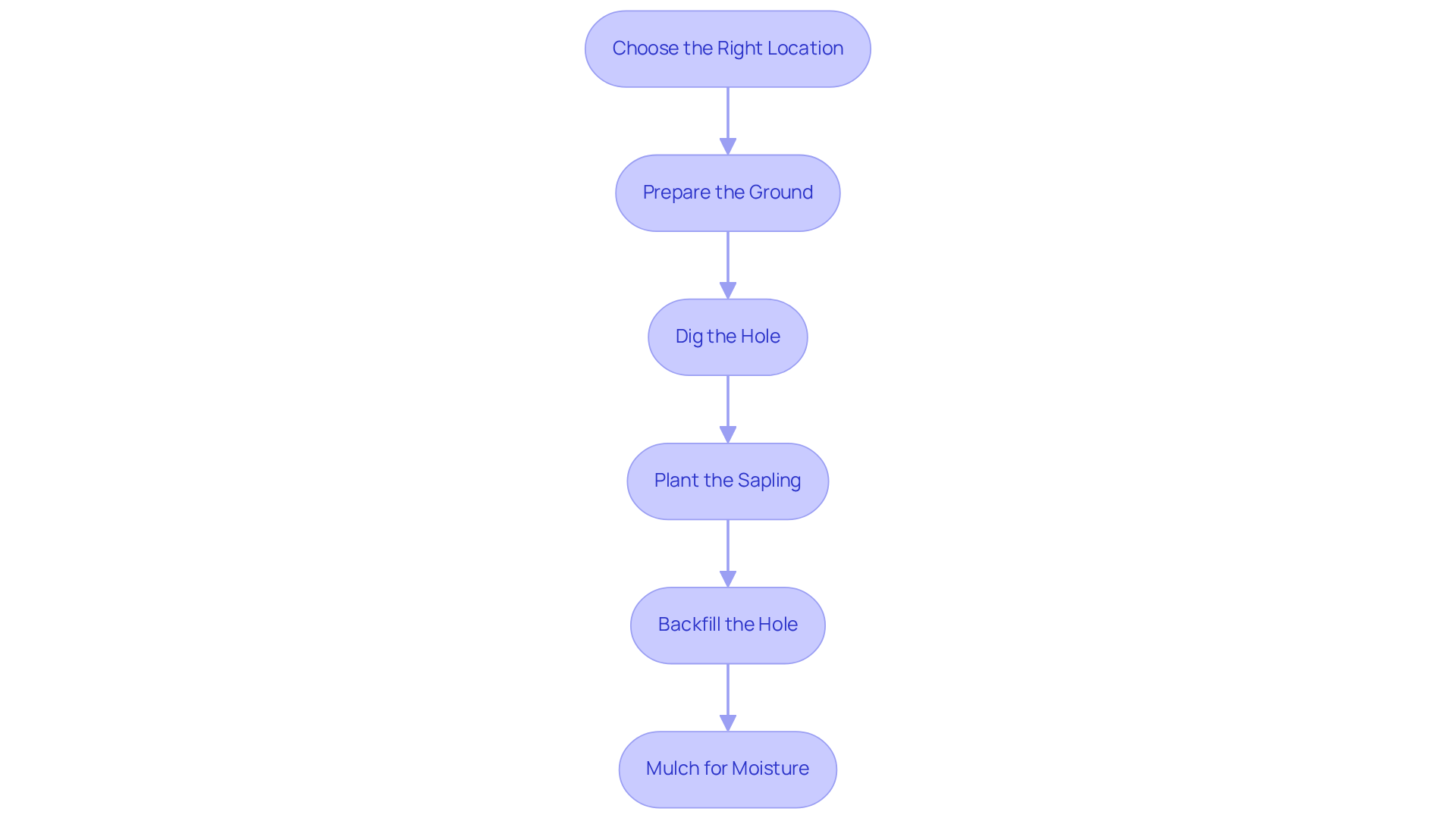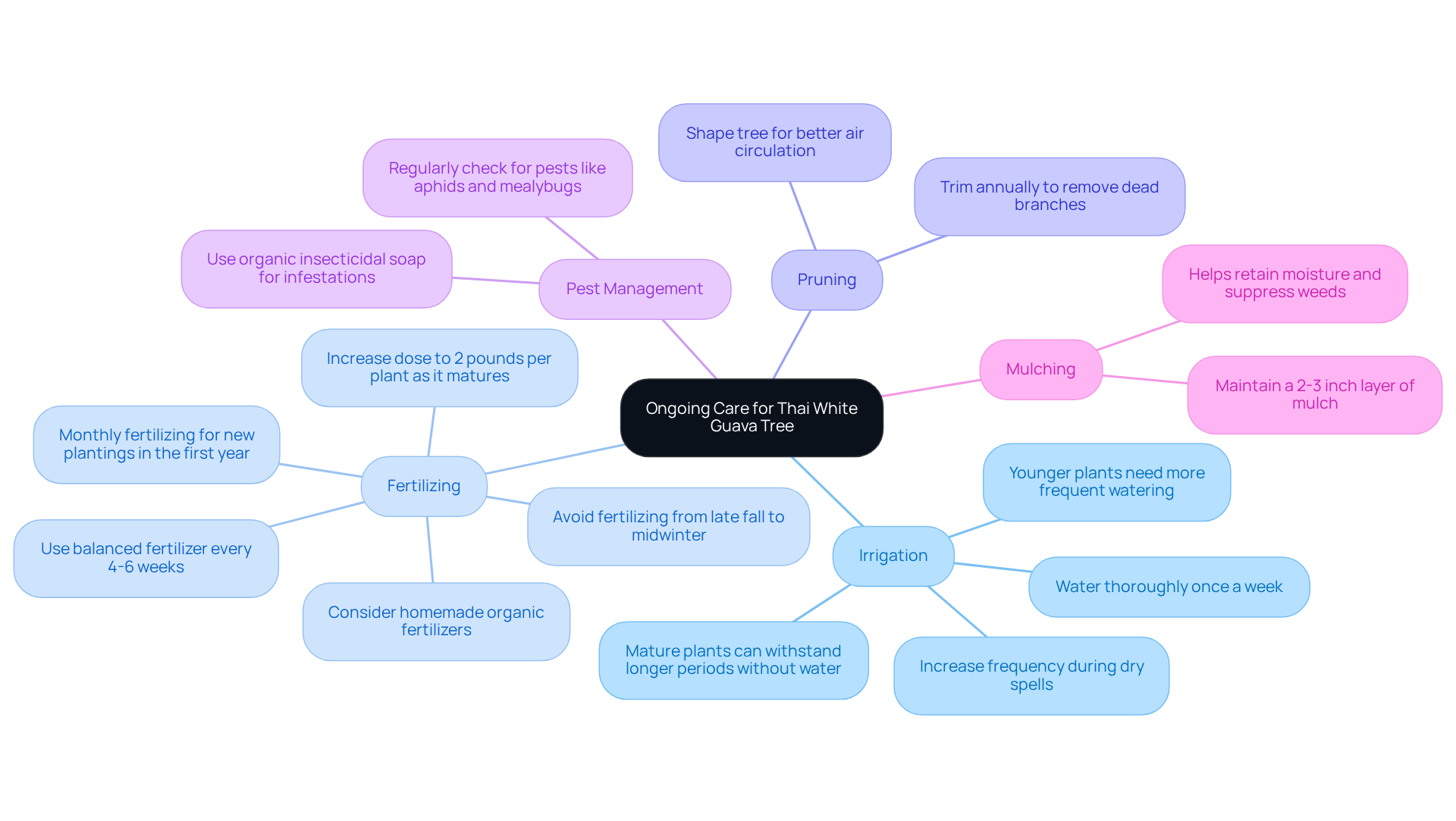
How to Grow a Thai White Guava Tree
Share
Growing a Thai White Guava tree is more than just a gardening endeavor; it’s an invitation to cultivate a slice of tropical paradise right in your backyard. With the right tools and techniques, you can transform your space into a fruitful oasis. However, the journey to a bountiful harvest can be daunting—what if the soil isn’t right, or pests threaten those delicate leaves?
Don’t worry: this guide delves into the essential steps for successfully nurturing a Thai White Guava tree, offering practical solutions to common obstacles along the way. Together, we can navigate these challenges and enjoy the rewarding experience of gardening.
👉 Shop the Thai White Guava Tree – grown with care at Everglades Farm and shipped from our Florida nursery.
- Preparation
- Planting
- Ongoing care
- Troubleshooting common issues
Gather Essential Tools and Materials
- Shovel or Trowel: This will help you dig the perfect planting hole.
- Garden Gloves: Protect your hands while you work with the earth and nurture your plants.
- Watering Can or Hose: Essential for giving your new plant a good drink after planting.
- Organic Compost: Enrich the soil and provide vital nutrients for your thai white guava tree.
- Mulch: A wonderful way to retain moisture and keep those pesky weeds at bay.
- Fertilizer: Choose a balanced fertilizer suitable for fruit plants, ideally one with a slow-release formula to nourish your tree over time.
- Soil Test Kit: Knowing the pH and nutrient levels of your soil will set you up for success.
- Pruning Shears: These will be invaluable for future care and shaping of your plant.

Plant the Thai White Guava Tree
- Choose the Right Location: Look for a sunny spot that enjoys at least 6-8 hours of direct sunlight each day. Well-draining earth is essential for your guava’s health.
- Prepare the Ground: It’s important to test the soil’s pH, aiming for a range between 5.5 and 7.0. Amending the soil with organic compost will enhance its fertility and drainage, setting your tree up for success.
- Dig the Hole: When you dig, make the hole twice as wide and the same depth as the root ball of your guava plant. This allows the roots to spread comfortably, giving your tree a strong foundation.
- Plant the Sapling: Gently remove the sapling from its container, loosening any tightly bound roots. Position your tree in the center of the hole, ensuring the top of the root ball is level with the surrounding ground.
- Backfill the Hole: Carefully fill the hole with the soil you’ve dug up, pressing down gently to eliminate air pockets. Water thoroughly to help settle the soil around the roots, nurturing them in their new home.
- Mulch for Moisture: Applying a layer of mulch around the base of your plant will help retain moisture and keep pesky weeds at bay.

Provide Ongoing Care and Maintenance
-
Irrigation: It's important to hydrate your guava tree thoroughly once a week, allowing the upper 2-3 inches of soil to dry out between waterings. During dry spells, consider increasing the frequency to three to four times a week, especially if your soil is sandy or light loamy, as it drains quickly. Remember, mature plants can withstand longer periods without water due to their deep root systems, while younger plants need a bit more love and should be irrigated two to three times weekly.
-
Fertilizing: To keep your tree healthy, use a balanced fertilizer, such as a 10-10-10 formula or a fruit plant fertilizer with a 6-6-6-2 ratio (nitrogen, phosphorus, potassium, magnesium), every 4-6 weeks during the growing season (spring and summer). For new plantings, a monthly fertilizing regimen is recommended during the first year after new growth appears. As your tree matures, increase the dose to 2 pounds per plant per feeding, reducing the frequency to three to four times a year. Be sure to avoid fertilizing from late fall to midwinter to prevent nutrient burn. You might also consider using homemade organic fertilizers like compost tea or fermented plant juices to nourish your guava plant naturally.
-
Pruning: Take a moment each year to trim your tree, removing dead or unhealthy branches and shaping it for better air circulation and light penetration. This simple act not only encourages healthy growth but also enhances your yield.
-
Pest Management: Regularly check your plant for pests such as aphids, mealybugs, and passion vine hoppers, which can affect nearby passion fruit vines. You can identify passion vine hoppers by their distinctive hopping behavior and the damage they leave on leaves. If you notice an infestation, don’t hesitate to use organic insecticidal soap to manage it effectively, and apply organic control methods as needed to prevent further issues.
-
Mulching: Keep your mulch replenished as needed to maintain a 2-3 inch layer around the base of your plant. This practice helps retain moisture, suppress weeds, and improve soil quality.

Troubleshoot Common Growing Issues
- Leaf Yellowing: If you notice your leaves turning yellow, it often signals nutrient deficiencies or overwatering. To address this, gently check the moisture levels of the soil. If it feels too dry, consider applying a balanced fertilizer to replenish those essential nutrients.
- Poor Fruit Production: Is your guava plant struggling to produce fruit? Ensure it receives adequate sunlight—ideally 6-8 hours each day. Proper fertilization is key, and regular pruning can improve air circulation, which in turn promotes a better yield.
- Pest Infestations: Keep a watchful eye for pests like aphids or whiteflies. If you spot an infestation, act swiftly with organic insecticidal soap or neem oil to protect your plant while being kind to beneficial insects. Remember to be mindful of guava insects, as they can also impact your plant's health.
- Root Rot: If your plant appears wilted even after regular watering, root rot might be the issue, often caused by overly wet soil. Make sure your planting area has proper drainage and reduce watering frequency to help the roots recover.
- Fungal Diseases: Look for signs of fungal infections, such as leaf spots or fruit rot. To combat these issues, enhance air circulation around your plant and apply copper-based fungicides as needed, especially for red algae and anthracnose, which can significantly affect plant health.
- Environmental Challenges: Be aware of unusual weather conditions. Many farmers have noticed that the Kharif season has become hotter, with drought frequencies increasing over the past five years. These factors can greatly influence the growth and productivity of your fruit plant.
- Plant Height Management: To prevent instability from the weight of the fruit and wind, try to maintain your guava plant at a height of 10 feet or less.
Conclusion
🍈 Ready to Grow Your Thai White Guava Tree?
This fruit tree brings both beauty and bounty to your garden. With proper care, you’ll enjoy fragrant, white-fleshed guavas fresh from your backyard.
👉 Shop the Thai White Guava Tree here
👉 Explore Guava Trees Collection
Frequently Asked Questions
What tools do I need to grow a Thai White Guava tree?
Why is a shovel or trowel important for planting a Thai White Guava tree?
How do garden gloves help in the planting process?
What is the purpose of using a watering can or hose?
Why should I use organic compost when planting?
What role does mulch play in growing a Thai White Guava tree?
What type of fertilizer is recommended for a Thai White Guava tree?
Why is a soil test kit important?
When should I use pruning shears?


